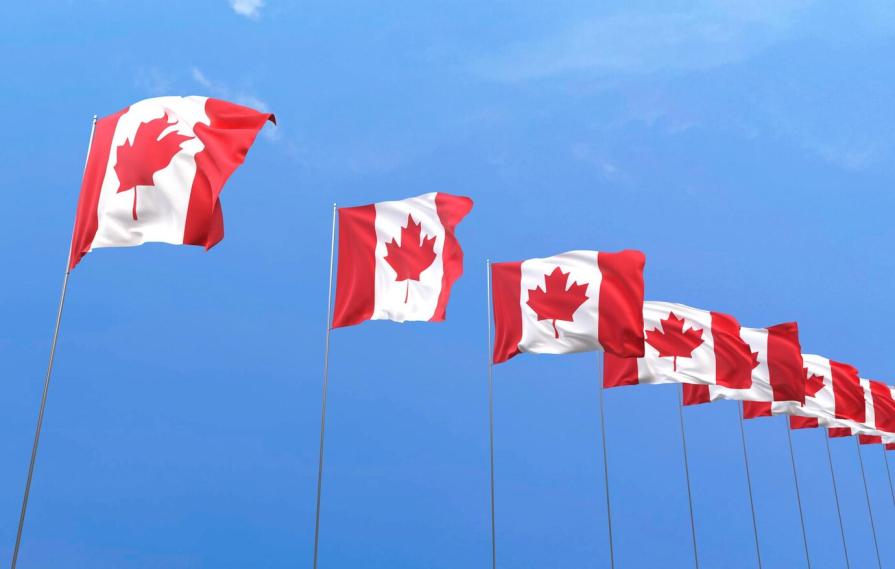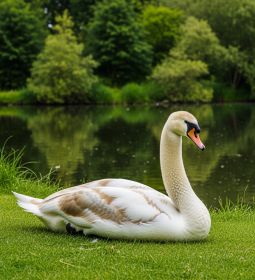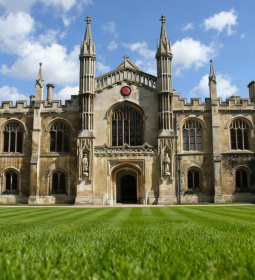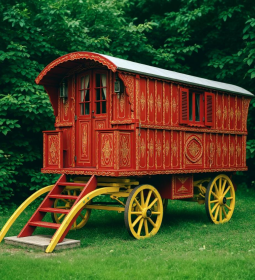The first banner to fly over Canada was the Cross of St. George, raised by Cabot in 1497 when his ship reached Newfoundland. After 35 years, Jacques Cartier hoisted the royal lilies of Francein Gaspé, which reigned over the local waters and lands for a long time, until, after the defeat in the Seven Years' War, it was replaced by the British colors of the Union.
De facto playing the role of the national flag, the Union Jack was used in the British provinces of Canada from 1621 - until the proclamation of independence and the approval in 1965 of the current version with a maple leaf.

There is a legend that explains its appearance in Canadian history. It is associated with the first visit to this country by the Prince of Wales. The English were peculiar to meet the appearance of the crown prince with roses, the Scots with branches of the national flower, thistle, and Canadian colonists with maple leaves, because they did not grow in Europe and symbolized the new nation. And so it happened.
In 1867, when all the colonies, provinces and territories on Canadian soil united in union, the question of the symbol arose. It was approved a year later and was a red background with the Cross of St. George in the upper left corner and a heraldic shield with provincial coats of arms placed on it and maple leaves on the right. All together it was called Red Ensign.
In this form, the flag existed until 1921, the Canadian Fleet under it passed the First World War. And this year the country received from King George V a new symbol - red and white, which emphasized the continuity of Canada not only with England, but also with France (until now, every fourth Canadian is a francophone).

Initially, the new coat of arms appeared on the flag of the Red Ensign and at the same time was approved as the source of official colors for the Dominion of Canada.
In 1925, the procedure for creating a new national flag began under the leadership of Prime Minister King MaKinsey, but the opposition delayed the case, and the committee was dissolved, without achieving anything.
It was possible to return to the issue only in 1964, a couple of years before the centenary of Canada. Prime Minister Pearson announced that it would not be bad to create a new national flag by such an important date, and proposed three vertical stripes and a maple leaf in the middle. A special parliamentary committee was formed, which included representatives of all the then parties that won the elections, in proportion to the number of seats:
- seven Liberals
- five conservatives
- one new Democrat
- one socialist
- one representative of the Quebec Minority Party, chaired by Herman Batten.
The group was supported by numerous politicians of different orientations, representatives of the scientific and cultural elite of the new state.

Opinions were divided: in total, more than two thousand proposals were received, to which almost four thousand of those that were received in the previous 20 years were compaid. For six weeks, the committee selected several options until it finally settled on two. The Liberals intended to support the option proposed by the prime minister. Then the conservatives, in order to delay the issue, supported the opposite proposal - and were mistaken. As a result, the current flag received unanimous support in the committee, and then the Canadian Parliament.
Interestingly, in addition to the maple leaf, a combination of cross and lily were offered as symbols of the founding countries, as well as local animals, plants, signs of beliefs (including traditional Indian ones) and even hockey sticks (it is interesting to note that during a similar competition for the flag of Australia in 1901, among the past first qualifying stage was a flag on which kangaroos played cricket).
A year later, closer to the autumn, the proposal was approved by the parliament, however, it was amended: the flag of the Military College of the Kingdom was adopted as the final sample - a red cloth with a wide white stripe in the middle, in the center of which the emblem was placed. The lengthy discussions, which lasted 15 days and 69 rounds of debate, ended with the approval of the draft by the national parliament in December, and then the signing of the Queen.
An interesting detail: on this sheet of red-leaf maple there are 23 tips, and on the flag there is a simplified one, with eleven. According to the results of aerodynamic tests, it turned out that this version of the flag in the wind is distorted to the smallest extent. What meticulous guys!












